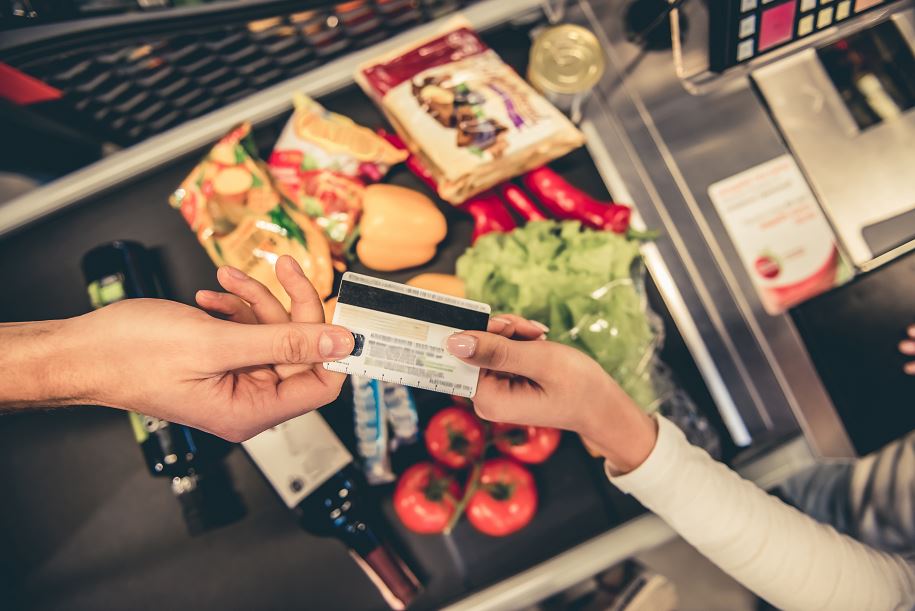How many of you have ever saved up hundreds of dollars – if not thousands – to buy something like a television, only to see the item drop in price just days after you bought the item?
Seeing the price drop on a big-ticket item only days or weeks after you’ve bought it and integrated it into your household can be tremendously frustrating. Did you know some of that aggravation may be soothed in the form of a credit for the price difference on your credit card statement if you bought the item with a credit card that offers price protection?
What is credit card price protection?
Credit card price protection is an often-overlooked feature on many credit cards. It provides a statement credit, or refund, for the difference in price if an item you bought with the card is discounted or otherwise drops in cost within a set time frame.
Cards issued by many of the large national banks, such as USAA, Citi, Chase, Capital One and Mastercard, generally offer at least one credit card with a price protection benefit. However, credit card price protection benefits are changing across the industry, so check with your card’s customer service line before making that big purchase.
What’s covered on a price protection credit card?
Almost any purchase on a credit card is eligible for price protection. However, due to the amount of evidence that you’ll need to provide to get your credit (more on that in a minute), price protection is best used for big-ticket items like electronics, appliances, and furniture.
What isn’t covered?
Used items, jewelry, perishable items, and items purchased outside the United States are generally ineligible under a credit card’s price protection program. Services are usually excluded as well, such as haircuts or repairs. In some cases, items bought on auction sites are also ineligible.
How do you use it?
Each issuing bank has its own set of rules and proof they require from customers to begin a claim. Citibank has been lauded for its ease of using their benefit via their Price Rewind website, even as its program has changed lately.
Other banks may require claim forms or hard copies of itemized receipts or advertisements. A call to your card’s customer service line is the most sure-fire way to find out what information you’ll need to provide to get your claim started.
Here are some guidelines to help you get the most out of your price protection benefits, regardless of what card you use:
- Use price protection for big purchases, such as furniture, appliances, as well as electronics like cameras, televisions, and computers.
- Dive deep into the fine print of your cardholder agreement to be aware of exclusions, deadlines, and claim limits, before you make your purchase. Extra credit goes to the consumer who calls customer service and confirms the information found in the agreement.
- Keep track of your paperwork until the claim is completed. While it’s true that digital statements and receipts are easy enough to come by, nothing beats original, itemized copies.
What are the rules?
Generally, a claim can be made up to 90-120 days after your purchase. Most companies limit how many claims a customer can make for a year, as well as how much they will credit per claim. For example, the Chase Sapphire Reserve card, which had a generous policy up until Summer 2018, limited individual claims to $500, and capped refunds at $2,500 for the year.
The burden is entirely on the consumer to keep track of prices and initiating a claim. This is why it’s worthwhile to track the prices of expensive items so that the time spent on the claim pays off.
The era of credit card price protection may be ending
Although this is a helpful benefit for consumers, many credit card companies are ending their price protection programs. In Summer 2018, Chase and Citibank have either quietly done away with or drastically changed their price protection benefit. This means that consumers must be extra careful to do their homework before attempting to take advantage of this practical but increasingly rare benefit.
Many experts blame price-tracking apps for the demise of price protection. Price tracking apps automated, and in some cases, gamified what was once a tedious chore. Banks literally paid the price in the form of an increased number of claims paid out. In other words, price protection is diminishing a card’s profitability thanks to the number of consumers who can track prices with minimal effort.
As is always the case with dealing with credit card companies, it pays to speak to customer service directly to learn the status and details of the card’s price protection benefit before opening a claim. Keep track of who you talk with and get as much in writing as possible via a secured message or email.

